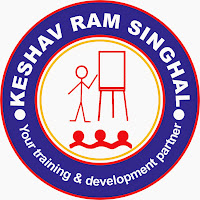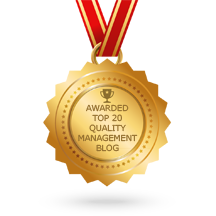ISO 21001:2018 EOMS Awareness - EOMS Principles
ISO 9001:2015 QMS standard is based on seven quality management principles, however ISO 21001:2018 EOMS (Educational organization management system) is based on following 11 management principles:
(i) Focus on learners and other beneficiaries,
(ii) Visionary leadership,
(iii) Engagement of people,
(iv) Process approach,
(v) Improvement,
(vi) Evidence-based decisions,
(vii) Relationship management,
(viii) Social responsibility,
(ix) Accessibility and equity,
(x) Ethical conduct in education, and
(xi) Data security and protection.
1.
Focus on learners and other beneficiaries – The primary focus of the EOMS is to meet learner and other beneficiary requirements and to exceed their expectations. This principle resembles with the customer focus principle of the QMS. An educational organization should understand current and future needs and expectations of its learners and other beneficiaries for its products, services, delivery, price, dependability etc. The organization should ensure a balanced approach, create awareness and communicate requirements of its learners and other beneficiaries throughout the organization. Its goal is to meet requirements of its learners and other beneficiaries. The organization should strive to exceed expectations of its learners and other beneficiaries.
2.
Visionary leadership – Visionary leadership is to engage all learners and other beneficiaries in creating, writing, and implementing the organization mission, vision and objectives. This principle resembles with the leadership principle of the QMS. We understand that leaders establish unity of purpose and direction of the organization. Leadership in an educational organization should create and maintain the internal environment in which people can become fully involved in achieving the EO's objectives. Top management of the EO needs to play leadership role through management commitment, focus on learners and other beneficiaries, policy, planning, responsibility and authority, effective communication and management review. Therefore, the leaders of the EO should (i) be proactive, (ii) understand and respond to changes that are visible in the educational industry environment, (iii) establish clear vision of the EO, (iv) build trust, eliminate fear and motivate people.
3.
Engagement of people – It is essential for the organization that all individuals involved are competent, empowered and engaged in delivering value. This principle resembles with the engagement of people principle of the QMS. There are various activities in an EO that are performed by the people. People at all levels are essence of the EO. Without engagement of people, nothing can be achieved. People of the EO need to be competent. They should be empowered and engaged in delivering value. Their engagement at all levels in the EO enable their abilities to be used for the EO's benefits. Top management of the EO should make sincere efforts to maximize engagement of people in the EO by taking steps to empower and motivate them and by providing ways to increase their skills and knowledge. If people of the EO are competent, empowered and engaged throughout, it will enhance EO's capability to create value and achieve its objectives.
4.
Process approach – Consistent and predictable results are achieved more effectively and efficiently when activities are understood and managed as interrelated processes that function as a coherent system, including input and output. This principle resembles with the process approach principle of the QMS. A desired output (consistent and predictable result) can be achieved more efficiently when all related resources and activities are understood and managed as a coherent system that functions as interrelated processes.
ISO 21001:2018 EOMS promotes the adoption of a process approach. It is the intention of the standard that the EO must adopt process approach when developing, implementing and improving the effectiveness of its quality management system. The main objective behind adoption of process approach is to enhance satisfaction of its learners and other beneficiaries by meeting their requirements.
To function effectively and efficiently, an EO has to determine and manage numerous linked activities. What is a process? An activity that comprises set of interrelated or interacting activities which transform inputs into outputs can be termed as a process. In EO's activities, output from one process can form the input to the next process. The application of a system of processes within an organization can be said the 'process approach'. Process approach requires determination of processes, interaction of determined processes and their management. Management of determined processes and the system as a whole can be achieved using a PDCA methodology with an overall focus on 'risk based thinking'. Risk based thinking helps at preventing undesirable outputs.
Process approach is helpful in ensuring: understanding and consistently meeting requirements, consideration of processes in terms of added value, the achievement of effective process performance, and improvement of processes based on evaluation of data and information.
5.
Improvement – Successful organizations have an ongoing focus on improvement. This principle resembles with the improvement principle of the QMS. Improvement is the process of a thing or system changing or moving from one state to another state considered to be better from the first state, usually through some action intended to bring about that better state. The concept of improvement is important to all EOs as well as to individuals.
Successful EOs have all time continual focus on improvement. Improvement is essential for every organization to be successful to maintain its level of performance, to react to changes in its conditions (internal and external) and to create new opportunities. Improvement is necessary for growth and success of an EO.
6.
Evidence-based decisions – Decisions and curricula based on the analysis and evaluation of data and information are more likely to produce desired results. This principle resembles with the evidence-based decision making principle of the QMS. Desired results or intended outputs are likely to be obtained when decisions based on analysis and evaluation of data and information are taken. Decision making becomes easier if there is analysis and evaluation of data and information.
Decision making always involves some uncertainty, so it can be termed as a complex process. There are multiple sources of information, multiple sources of inputs and a number of interpretations that can lead to a subjective decision. It is always better to have an evidence-based decision making as facts, evidence and analysis of data and information lead to greater objectivity and confidence in decision making.
Proper use of statistical techniques will ease analysis of data and information that will lead to evidence-based decision making. Decisions taken based on analysis of data and information will lead to the right path for consistent improvement of the EO's system including processes and resulting product and services.
In India and also in other countries, it is seen that large and medium-sized organizations are using statistical tools, however there is a need to increase awareness for using statistical tools among people working in EOs.
7.
Relationship management – For sustained success, organizations manage their relationships with interested parties, such as providers. This principle resembles with the relationship management principle of the QMS. This principle resembles with the evidence-based decision making principle of the QMS.
An EO and its learners and other beneficiaries are interdependent. Learners or other beneficiaries can affect a decision or activity of an EO. And also interested party or parties can be affected by a decision or activity of an organization. Interested parties can influence the performance of an organization. A mutually beneficial relationship between the EO and its learners and other beneficiaries enhance the ability to all to create value to each other.
To get maximum benefits of relationship management on EO's performance, it is necessary for the EO to manage its relationship with its learners and other beneficiaries
8.
Social responsibility – Socially responsible organizations are sustainable and ensure long-term success. The practice of social responsibility does not limit only to corporations, companies or NGOs, presently EOs are also responsible for all the impacts that cause their operations towards their publics, the society at large and the environment.
9.
Accessibility and equity – Successful organizations are inclusive, flexible, transparent and accountable, in order to address learners’ individual and special needs, interests, abilities and backgrounds. In fact accessibility and equity are principles of social justice. Equity relates to fairness that recognizes, some people are more disadvantaged than others in being able to access services and facilities and therefore there is a responsibility to address this lack of equity. Accessibility is the capacity of people, those have to physically enter a premises, building or space and also to use a facility or service.
10.
Ethical conduct in education – Ethical conduct relates to the ability of the organization to create an ethical professional environment where all interested parties are dealt with equitably, conflicts of interests are avoided, and activities are conducted for the benefit of the society. Ethical conduct in education is a well founded norm that makes the actions right and wrong. It helps categorise different values such as integrity, discipline and honesty among others and apply them in daily lives. Ethics influences behaviour and allows an individual to make te right choices.
11.
Data security and protection – The organization creates an environment where all interested parties can interact with the educational organization in full confidence that they maintain control over the use of their own data, and that the educational organization will treat their data with appropriate care and confidentiality. Data protection and cyber security for the education sector has much importance. EOs at all levels are open to attack from cyber criminals and ill-prepared and under-resourced to meet the requirements of today’s more stringent data protection laws, so the EO should create such environment where all interested parties can interact with the EO in full confidence that the EO maintains control over the use of its own data, and that the EO will treat their data with appropriate care and confidentiality.
Abbreviations -
EO = Educational organization
EOMS = Educational organization management system
QMS = Quality management system
Best wishes,
KRS


